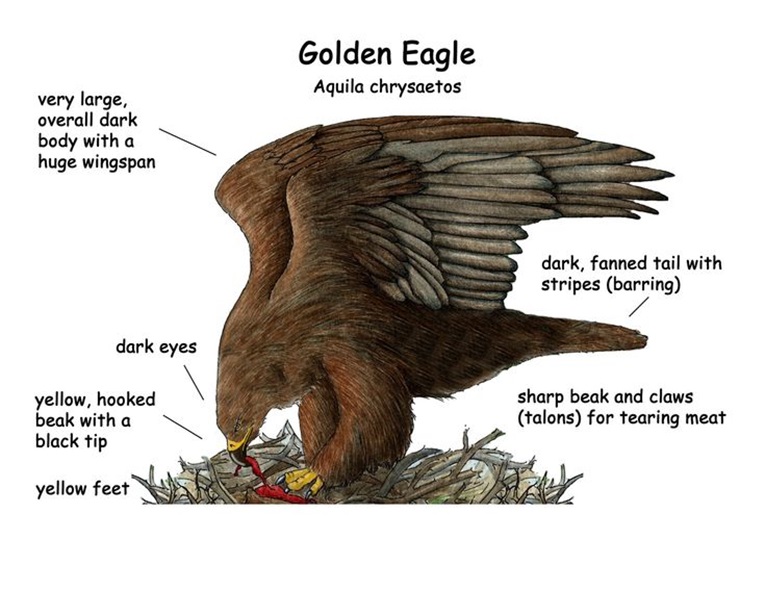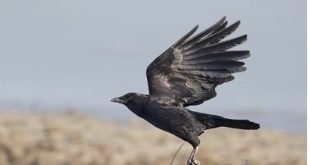Eagles are magnificent birds of prey known for their exceptional strength, keen eyesight, and remarkable hunting abilities. These apex predators are equipped with specialized body parts that help them survive and thrive in diverse environments. In this article, we will explore the key body parts of eagles and their functions, shedding light on how these majestic creatures dominate the skies.
A Body Part Of Eagle

1. Beak (Bill)
The eagle’s beak is one of its most distinctive features. It is large, hooked, and incredibly strong, designed specifically for tearing flesh. The upper mandible curves downward and overlaps the lower mandible, creating a powerful tool for hunting and feeding. The beak’s functions include:
- Tearing Flesh: The sharp tip of the beak allows the eagle to tear apart the tough skin and flesh of its prey.
- Feeding Young: Eagles use their beaks to carefully feed their chicks by tearing small pieces of meat.
- Self-Care: Eagles use their beaks to preen their feathers, maintaining their plumage for optimal flight.
2. Eyes
Eagles are renowned for their extraordinary vision, which is among the best in the animal kingdom. Their eyes are large, taking up a significant portion of their skull, and are specially adapted for long-distance vision. Key features and functions of eagle eyes include:
- Keen Vision: Eagles can see up to eight times farther than humans, enabling them to spot prey from great distances.
- Color Perception: They can detect a wide range of colors and even see ultraviolet light, which helps them locate prey and navigate their environment.
- Binocular Vision: Their forward-facing eyes provide excellent depth perception, essential for accurate hunting.
- Protective Structures: Eagles have a nictitating membrane, a translucent third eyelid that protects their eyes while maintaining visibility.
3. Talons
The talons of an eagle are its primary weapons. These sharp, curved claws are incredibly strong and capable of gripping and immobilizing prey. Each foot has four talons, with the rear talon (hallux) being particularly powerful. The functions of talons include:
- Capturing Prey: Eagles use their talons to snatch prey mid-flight or from the ground.
- Holding Prey: The strong grip of their talons ensures that prey cannot escape.
- Defense: Talons can also be used to fend off threats or predators.
4. Wings
Eagle wings are broad and powerful, designed for soaring and gliding over vast distances. The size and shape of their wings vary among species, but all are adapted for efficient flight. The functions of wings include:
- Flight: Eagles are capable of flying at high altitudes and covering large distances in search of food.
- Soaring and Gliding: Their wings allow them to ride thermal currents, conserving energy during long flights.
- Hunting: Eagles use their wings to maneuver quickly and stealthily when hunting prey.
- Courtship Displays: During mating season, eagles use their wings for aerial displays to attract mates.
5. Feathers
Eagle feathers are essential for flight, insulation, and protection. They are lightweight yet strong, providing the bird with the necessary lift and stability. The primary types of feathers and their functions are:
- Flight Feathers: Located on the wings and tail, these feathers are crucial for lift, steering, and braking during flight.
- Contour Feathers: These smooth feathers cover the body, streamlining the eagle for efficient flight.
- Down Feathers: Found beneath the contour feathers, these provide insulation to keep the eagle warm.
- Molting: Eagles regularly shed and replace their feathers to maintain their flying ability.
6. Legs
The legs of an eagle are strong and muscular, covered with scales that provide protection. These legs are adapted for gripping and carrying prey. Functions include:
- Support: The legs support the eagle’s body during perching and while handling prey.
- Prey Handling: Eagles use their legs to hold and manipulate prey while feeding.
- Hunting: The strength of their legs contributes to the effectiveness of their talons in capturing and subduing prey.
7. Tail
The tail of an eagle plays a vital role in flight and balance. It is made up of strong, stiff feathers that can spread out or close together. The functions of the tail include:
- Steering: The tail helps the eagle change direction and maintain stability during flight.
- Braking: By spreading its tail feathers, the eagle can slow down and land more effectively.
- Communication: Tail movements can be used for signaling during social interactions or courtship.
8. Skeleton
The eagle’s skeleton is lightweight but strong, adapted for flight and predation. Key adaptations and functions of the skeleton include:
- Hollow Bones: These reduce the bird’s weight, making flight more efficient.
- Keel Bone: This large, central bone anchors the powerful flight muscles.
- Sharp Beak and Talon Attachments: The skeleton supports the muscles that control the beak and talons, enabling precise and powerful movements.
9. Respiratory System
Eagles have a highly efficient respiratory system that supports their active lifestyle. It includes air sacs that allow a continuous flow of air through the lungs. Functions include:
- Oxygen Supply: The respiratory system ensures a constant oxygen supply during high-altitude flights.
- Thermoregulation: Breathing also helps regulate the eagle’s body temperature.
10. Heart
The eagle’s heart is large and powerful, essential for maintaining the high energy levels required for flight and hunting. Key functions include:
- Pumping Blood: The heart delivers oxygen-rich blood to the muscles, enabling sustained activity.
- Endurance: A strong heart supports the eagle’s ability to fly for long periods.
Conclusion
Every part of an eagle’s body is finely tuned for survival, making it one of the most efficient predators in the animal kingdom. From its sharp beak and talons to its powerful wings and exceptional eyesight, each feature plays a crucial role in its ability to hunt, fly, and thrive. Understanding the anatomy and functions of an eagle’s body not only highlights the marvels of evolution but also deepens our appreciation for these majestic birds.


